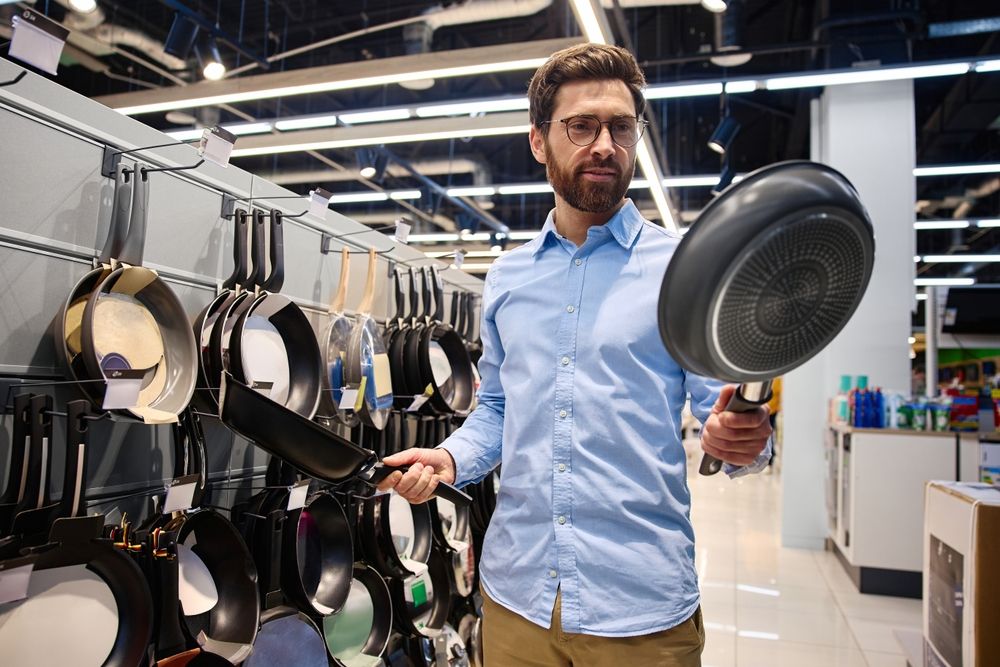Cooking at home is one of the best steps you can take toward better health. But while many people focus on fresh ingredients and healthy recipes, they often overlook something equally important: the cookware. The pots and pans you use can affect not only the nutritional value of your meals but also how much added fat you need, how evenly your food cooks, and whether harmful substances leach into your dishes.
With the right cookware, you can make it easier to stick to healthy habits, reduce unnecessary calories, and protect your long-term health. This guide will walk you through the best materials, essential cookware pieces, and smart shopping tips to help you build a kitchen that supports healthy cooking.
1. Why the Right Cookware Matters
Many home cooks don’t realize that the materials used in cookware can significantly impact the food they prepare.
Some materials heat unevenly, leading to burned spots or undercooked centers. Others require large amounts of oil or butter to prevent food from sticking. And certain older or low-quality nonstick coatings can release harmful chemicals when overheated.
By investing in better pots and pans, you can:
-
Reduce added fats by cooking with nonstick or seasoned surfaces.
-
Maintain more nutrients by preventing overcooking or burning.
-
Avoid exposure to toxic chemicals by using safe, durable materials.
Choosing the right cookware is a small change with big health benefits.
2. Best Cookware Materials for Health
Not all pots and pans are created equal. Here’s a breakdown of the healthiest cookware materials — and why they’re worth considering.
Stainless Steel
-
Non-reactive, so it won’t interact with acidic ingredients like tomatoes or vinegar.
-
Extremely durable and resistant to rust or corrosion.
-
Often layered with aluminum or copper cores for better heat distribution.
-
Needs some oil but performs beautifully for sautéing, boiling, and simmering.
Cast Iron (Seasoned or Enameled)
-
Naturally nonstick when properly seasoned, requiring minimal added fat.
-
Can increase dietary iron, which is beneficial for many people.
-
Holds and distributes heat evenly, ideal for searing and slow cooking.
-
Enameled versions are easier to clean and won’t rust, though they’re usually pricier.
Ceramic-Coated
-
Nonstick surface made from sand-based ceramic, free from PFAS, PFOA, and PTFE (chemicals used in older nonstick coatings).
-
Requires little or no oil.
-
Best for gentle cooking at low to medium temperatures.
Hard-Anodized Aluminum
-
Lightweight yet strong, with a scratch-resistant surface.
-
Even heat conduction.
-
Often paired with nonstick coatings that reduce the need for excess fat.
Glass
-
Non-reactive and toxin-free.
-
Excellent for baking or oven dishes.
-
Doesn’t leach chemicals or alter food flavors.
While you can still use some modern nonstick pans, make sure they’re free from outdated chemicals and never overheat them — as even safe coatings can degrade at high temperatures.
3. Essential Pots and Pans for a Healthy Kitchen
You don’t need an overflowing cabinet of cookware. Focus on a few versatile, high-quality pieces that meet most of your needs.
Skillet (10–12 inches)
-
Stainless steel, ceramic, or cast iron.
-
Perfect for stir-fries, sautéed vegetables, lean proteins, or one-pan meals.
Saucepan (2–3 quarts)
-
Ideal for boiling grains, making soups, or heating sauces.
-
Stainless steel or hard-anodized aluminum are great choices.
Stockpot (6–8 quarts)
-
Big enough for healthy soups, stews, or cooking whole grains and legumes in bulk.
-
Stainless steel provides durability and even heating.
Dutch Oven
-
Heavy-duty pot (usually cast iron or enameled cast iron) for slow-cooked stews, braises, and roasts.
-
Can go from stovetop to oven, increasing versatility.
Baking Dish (Glass or Ceramic)
-
Essential for roasting vegetables, baking fish or casseroles, or preparing oven-to-table meals.
Investing in these core pieces sets up your kitchen for success without clutter.
4. Key Features to Support Healthy Cooking
Beyond the material, smart design features make pots and pans more user-friendly for healthier techniques.
Nonstick Surfaces
-
Let you reduce oil or butter when cooking.
-
Ideal for eggs, pancakes, and delicate fish.
-
Always use non-abrasive utensils to preserve the coating.
Heavy, Even Heat Bases
-
Prevent hot spots that burn food and destroy nutrients.
-
Make cooking more predictable and even.
Oven-Safe Construction
-
Expand your range of cooking techniques, such as starting a dish on the stovetop and finishing it in the oven.
-
Look for handles and lids that can withstand higher temperatures.
Dishwasher-Safe
-
Makes cleanup faster, encouraging you to cook at home more often.
A few thoughtful design choices can save time and support your health goals.
5. Caring for Your Cookware
Proper care helps maintain nonstick performance, prevent damage, and ensure your cookware remains safe to use.
Stainless Steel
-
Clean promptly after use to prevent discoloration.
-
Use non-abrasive cleaners or gentle scrubbing pads.
Cast Iron
-
Maintain seasoning by applying a thin layer of oil after cleaning.
-
Never leave wet or soaking, as it can rust.
Ceramic-Coated
-
Avoid metal utensils and harsh scrubbers.
-
Hand wash when possible to preserve the coating.
Hard-Anodized Aluminum
-
While often dishwasher-safe, handwashing extends its lifespan.
-
Stick to soft sponges to avoid damaging the surface.
By treating your pots and pans well, you ensure they stay safe and effective for years.
6. Setting a Realistic Budget
Healthy cooking doesn’t require a luxury kitchen — just smart choices.
Budget Guide:
-
Entry Level ($100–$200): Basic sets with essential pieces in stainless steel or ceramic-coated options.
-
Mid-Range ($200–$500): Well-known brands offering premium durability, better heat distribution, and longer warranties.
-
High-End ($500+): Chef-level equipment, custom designs, or specialty materials like copper or enameled cast iron.
If you’re on a tight budget, prioritize quality over quantity. Start with a few versatile pieces and build your collection gradually.
7. Cooking Techniques That Maximize Health
Even the best pots and pans can’t make your food healthier on their own — it’s how you cook that matters.
Reduce Oil and Butter
-
Use nonstick or seasoned surfaces.
-
Replace oil with water or broth when sautéing vegetables.
Steam or Poach Instead of Frying
-
Use a stainless-steel pot with a steamer basket.
-
Poach fish or chicken in broth for added flavor without added fat.
Avoid High-Heat Charring
-
While grilled flavors are delicious, excessive charring can produce harmful compounds.
-
Use moderate heat and avoid burning your food.
Batch Cook Healthy Staples
-
Prepare big batches of whole grains, beans, or soups in a stockpot for easy, healthy meals throughout the week.
The combination of smart techniques and good cookware makes it easier to stay on track with your health goals.





